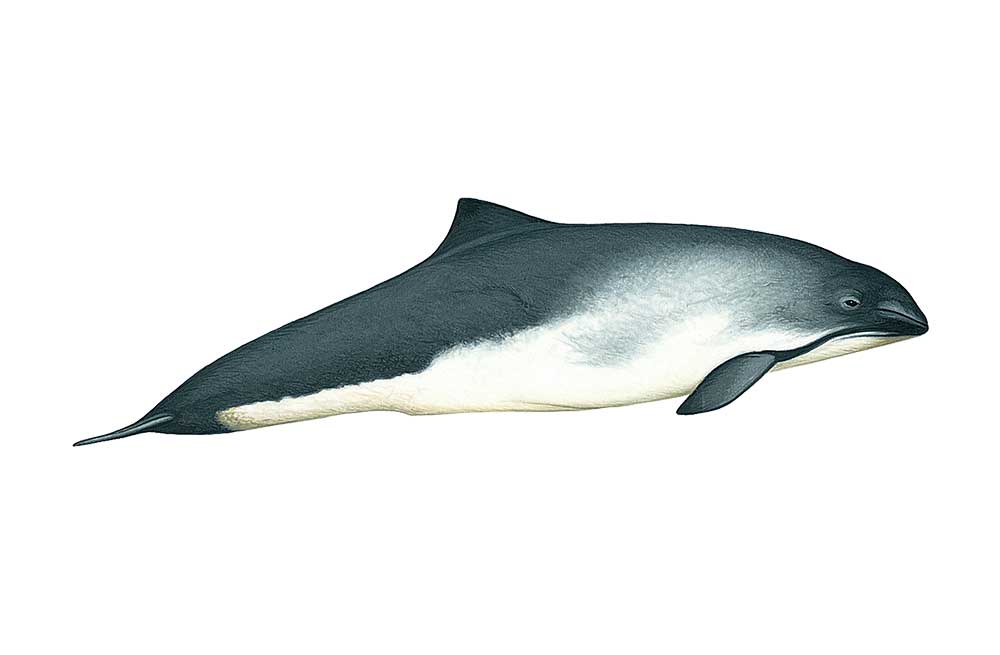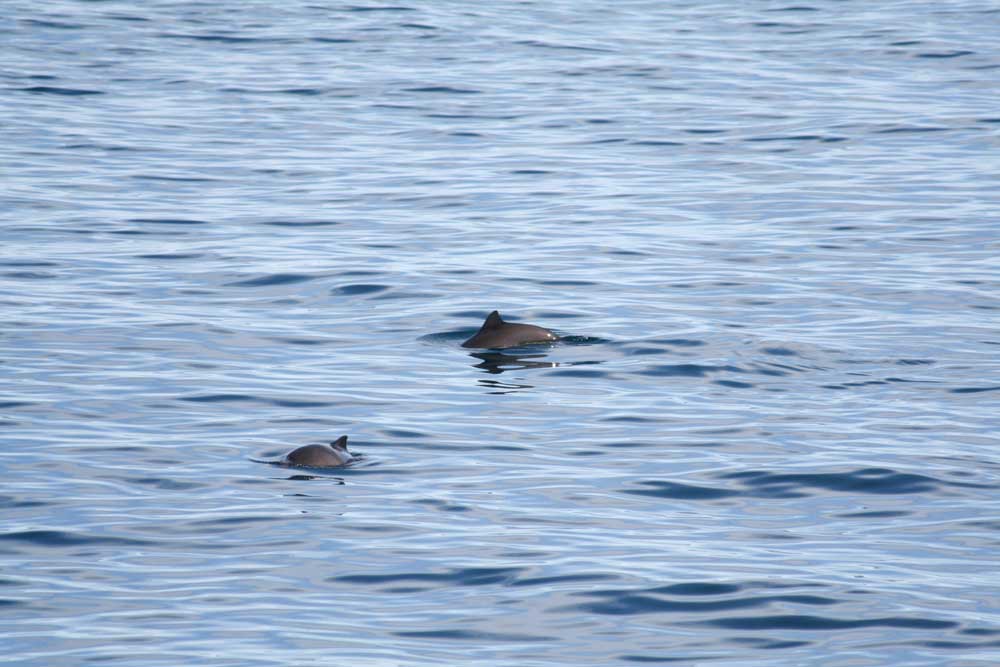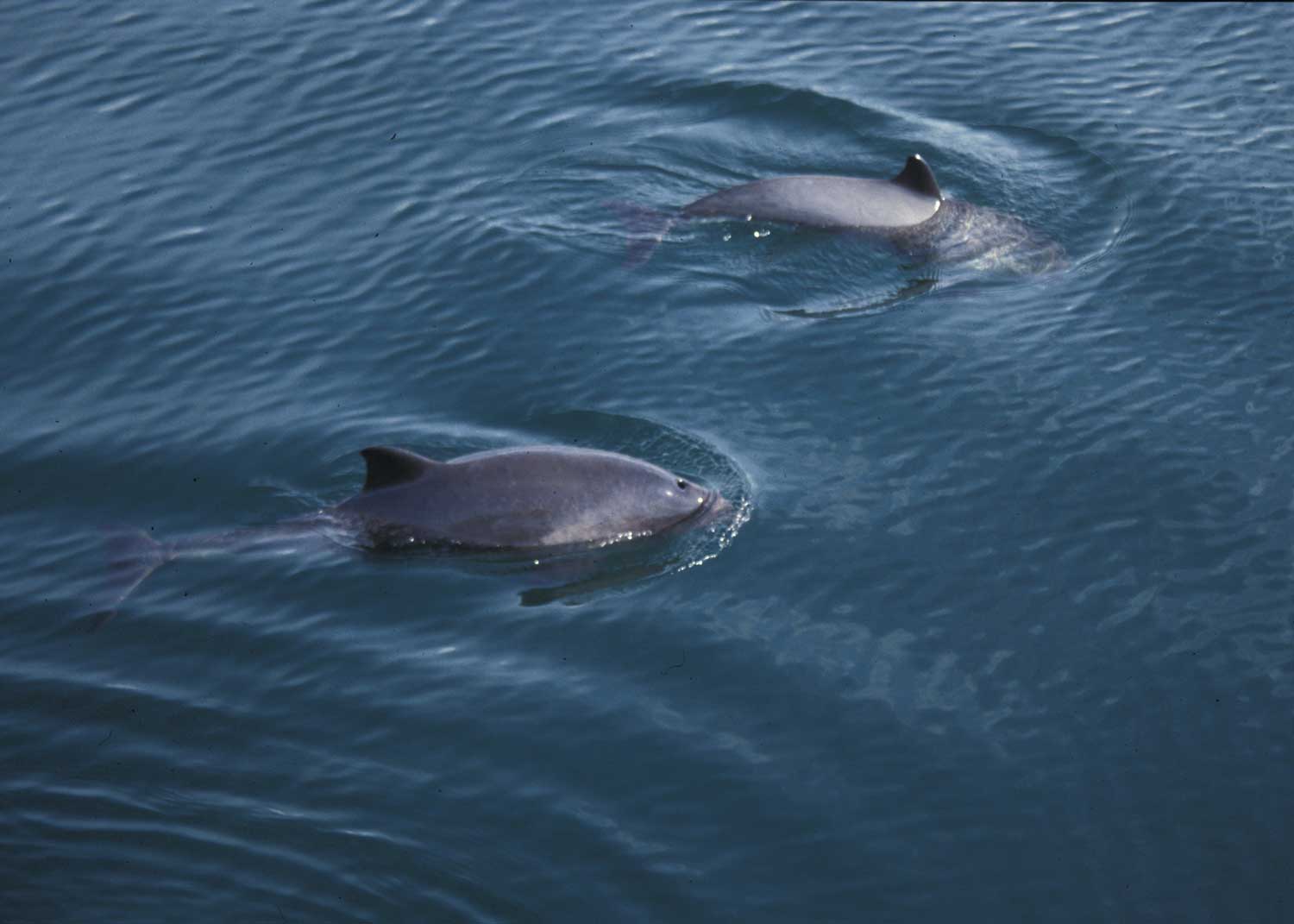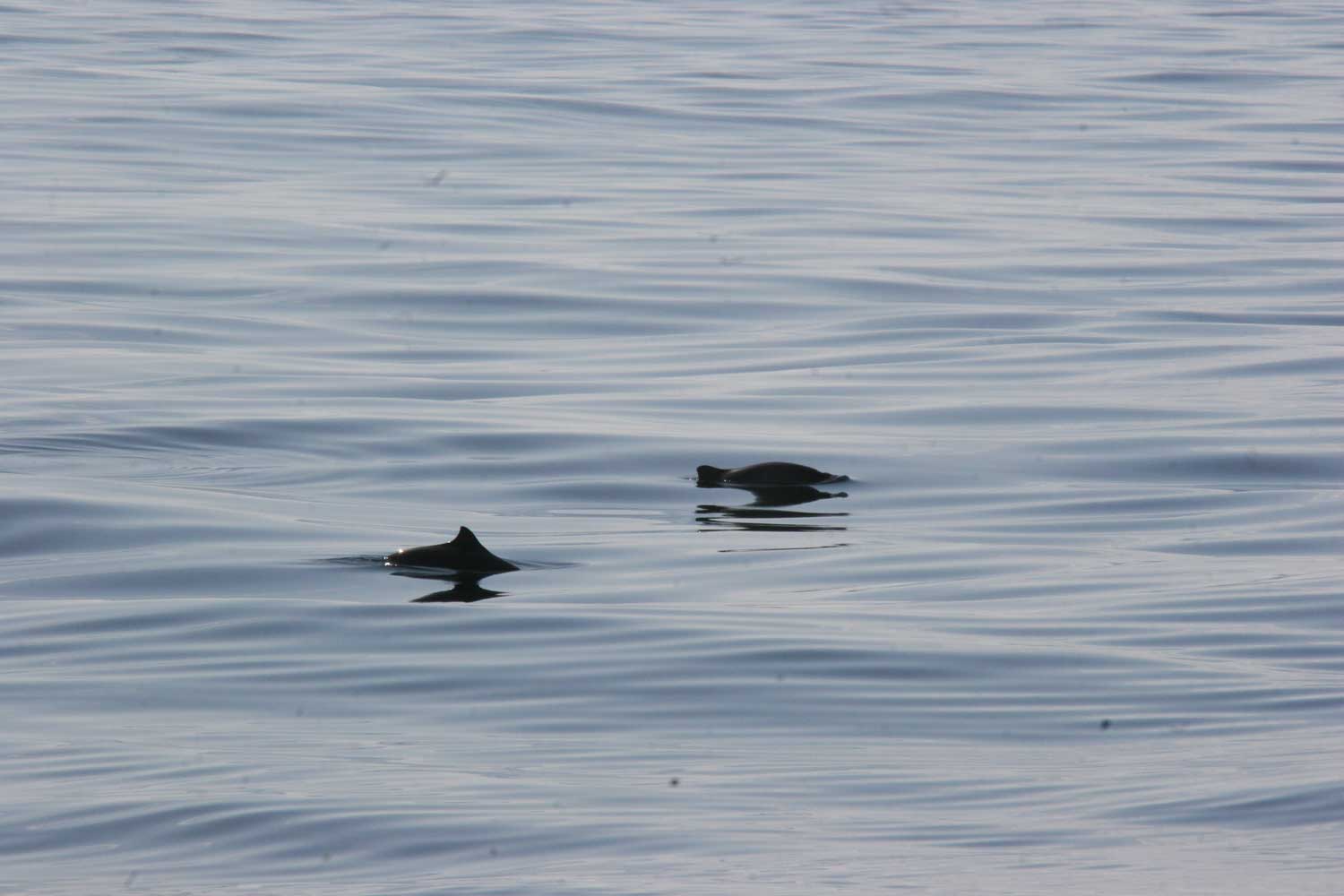
Latin: Phocoena phocoena
Gaelic: Peileag
CETACEAN FACTFILE:
Months: January – December
Length: Up to 1.9 metres
Range: Coastal waters of North Atlantic and Pacific
Threats: Entanglement in fishing gear, habitat degradation
Diet: Variety of fish, shrimp and squid
PHYSICAL DESCRIPTION
Growing to between 1.4 and 1.9 metres in length and weighing around 68 kg, the harbour porpoise is the smallest cetacean found in the Hebrides. They have a blunt head and a stocky body with a triangular dorsal fin positioned the middle of their backs, which is visible when the animal surfaces. They are typically dark grey on the back and pectoral fins, with lighter grey sides and a white throat and underside.
BEHAVIOUR
Harbour porpoises are normally seen only briefly when they surface to breathe. The blow is not normally visible but a puffing sound is often heard, earning this animal the nickname ‘puffing pig’. They are commonly seen in groups of two to five animals. Generally thought of as being quite elusive animals, harbour porpoises will rarely approach vessels and they are not known for aerial activity.
HABITAT AND DISTRIBUTION
Harbour porpoises are found in relatively inshore waters throughout the northern hemisphere. They are widespread throughout coastal regions of the Hebrides and can be seen year-round. The number of harbour porpoises in Hebridean waters is amongst the highest in Europe.
FOOD AND FORAGING
The harbour porpoise diet consists of over 20 different species of fish, squid, octopus and shellfish. Herring, sprat and sandeel make up a large part of their diet in Hebridean waters. When feeding, they commonly surface to breathe about four times every 10 to 20 seconds before diving for up to six minutes. Their teeth are small and spade-like, and they are used to catch prey but not for chewing. They use echolocation clicks when exploring the underwater environment and searching for food. Killer whales are the main natural predator of harbour porpoises in the Hebrides.
STATUS AND CONSERVATION
Harbour porpoises are susceptible to being disturbed or killed by many human activities. Because of their feeding habits, they are at a high risk of entanglement in fishing gear. It is believed that several thousand may be entangled and drowned each year in UK waters, primarily in gill nets. Harbour porpoise distribution overlaps with areas of the coast that are most heavily used by people, which means they are exposed to high levels of shipping traffic, coastal development and other human sources of disturbance. Hearing is the most important sense for porpoises, but the loud underwater noises caused by vessels, military activity and seal scarers (Acoustic Deterrent Devices) used by some fish farms may impact on their distribution and welfare.
Harbour Porpoise Hotspot Map




